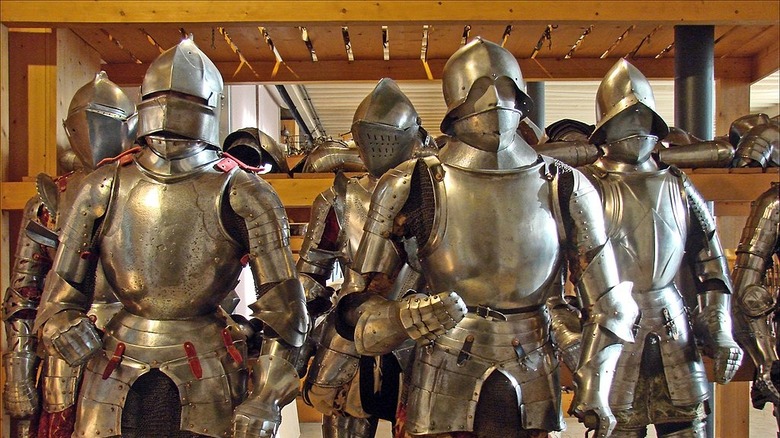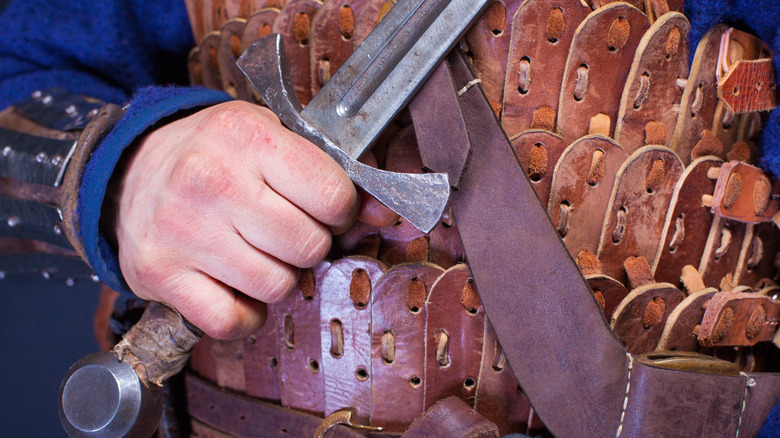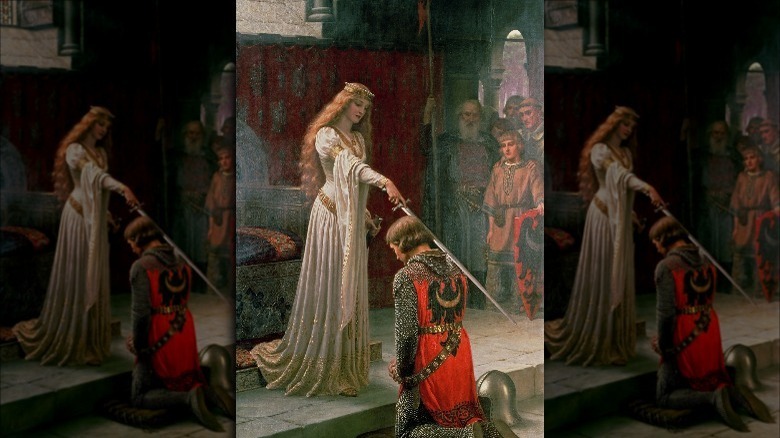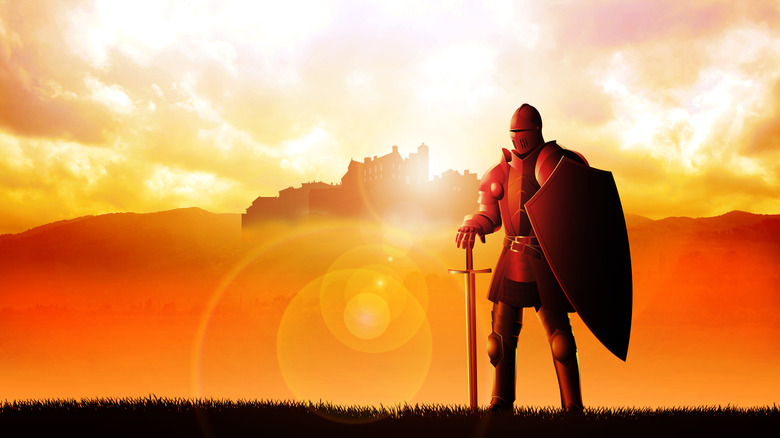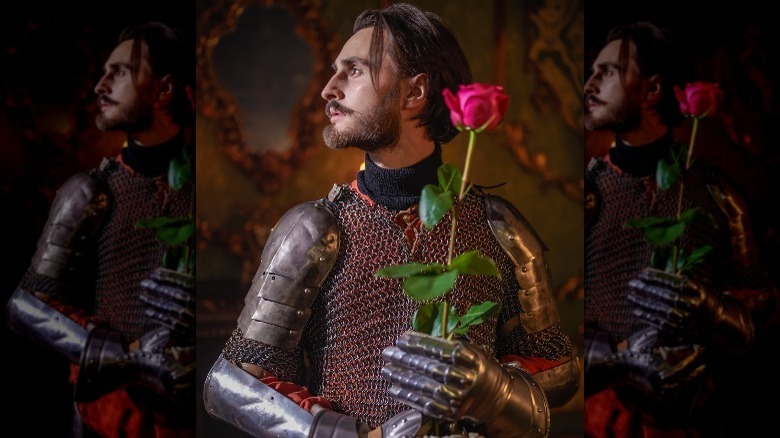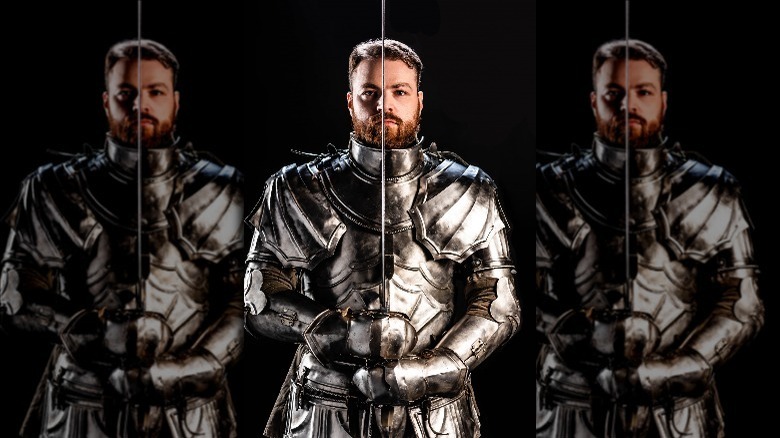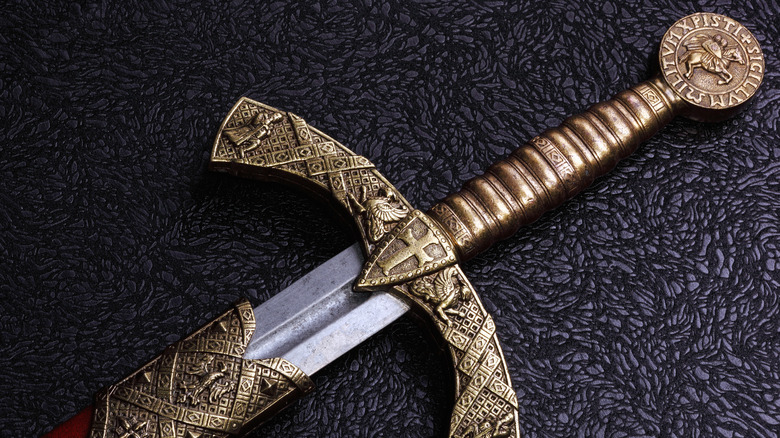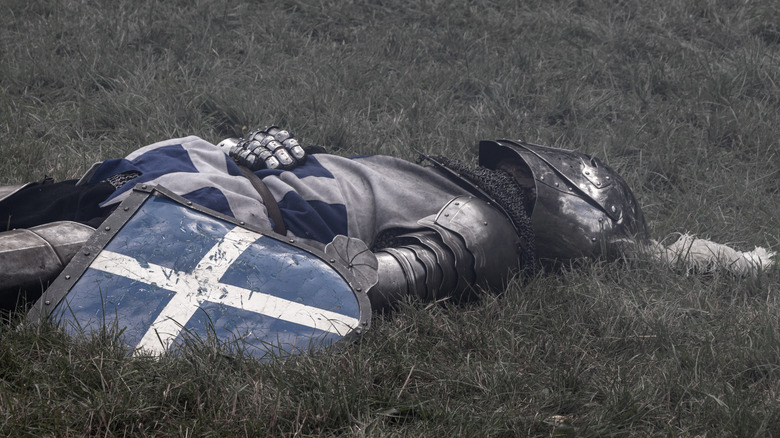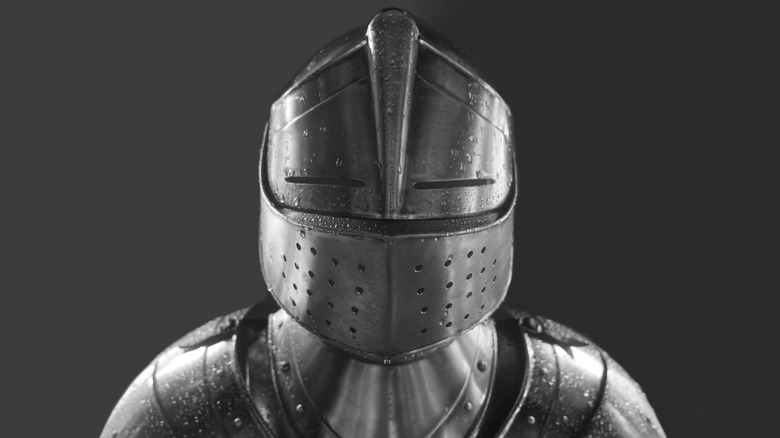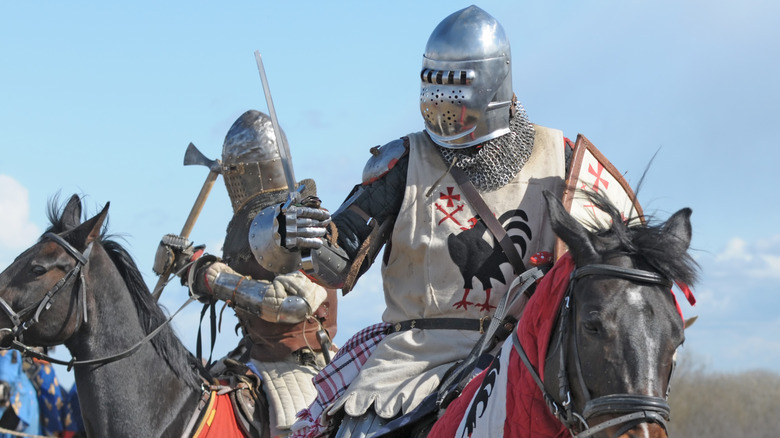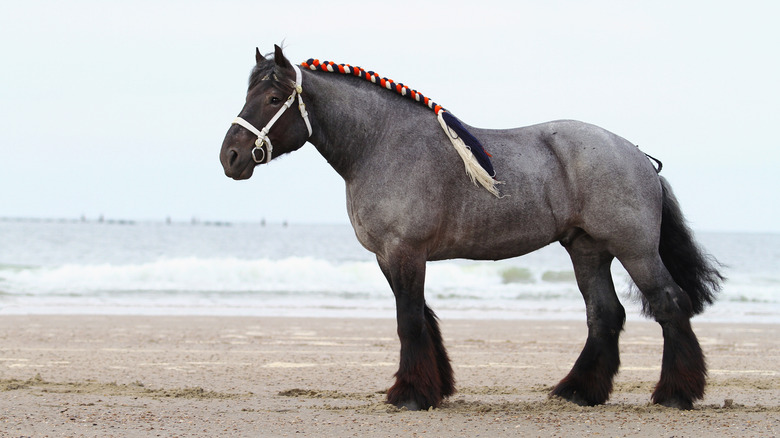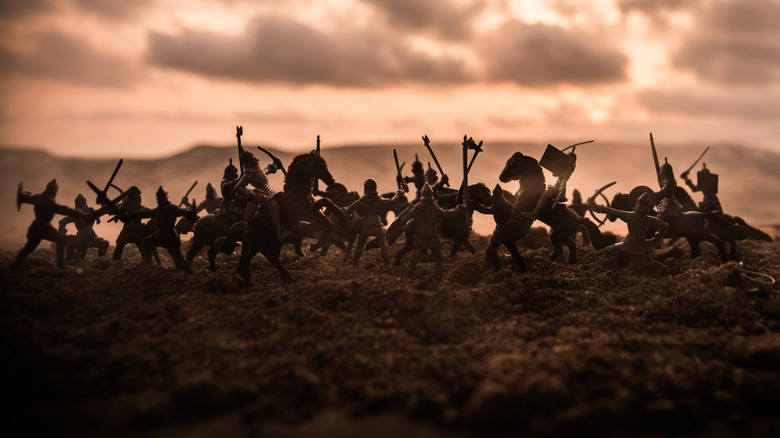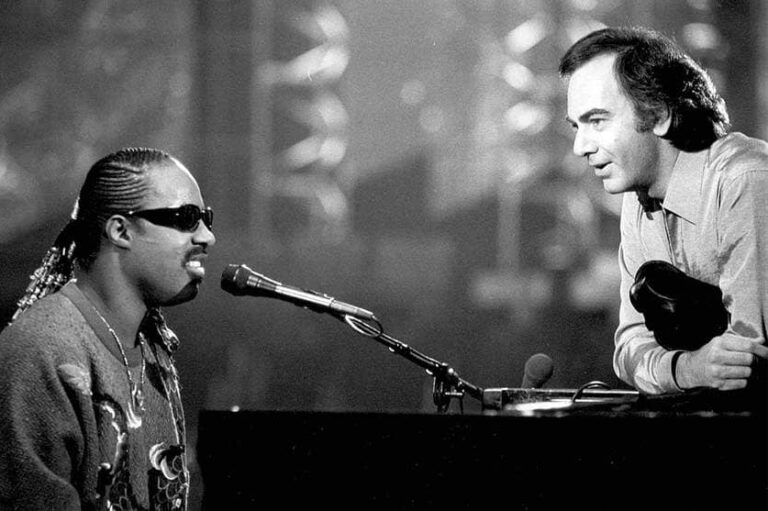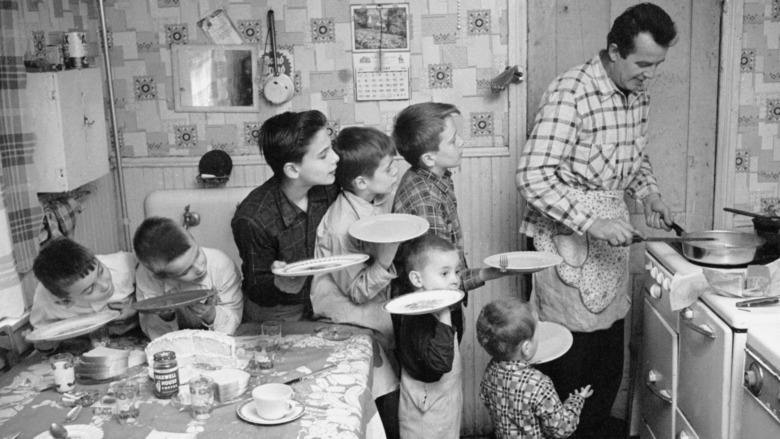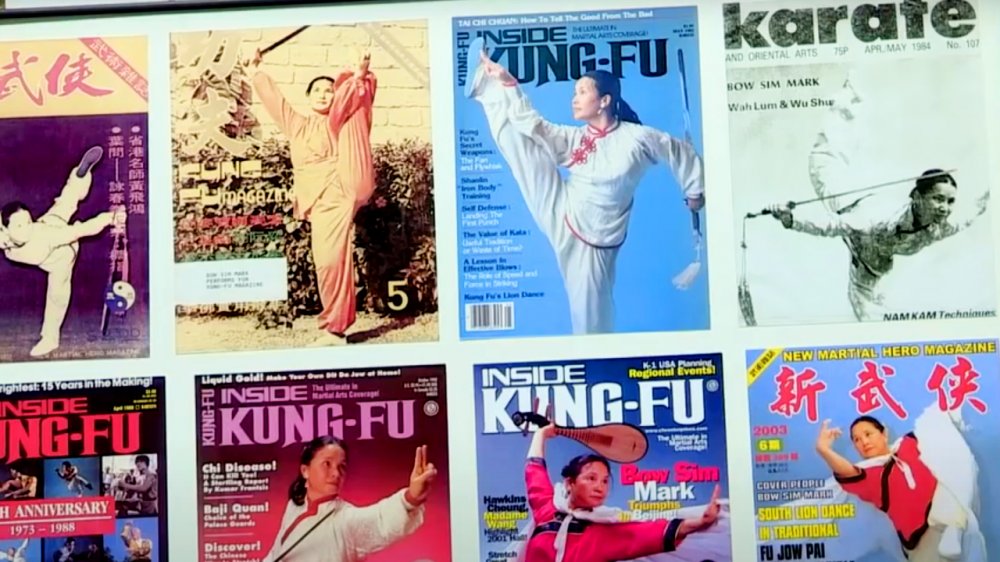
Everything Movies Get Wrong About Being A Knight
The Knight in Shining Armor is one of the most familiar images in history. Even if you know absolutely nothing about the Medieval period or chivalry or the history of warfare, you probably recognize the iconic knight in plate armor astride an enormous horse, sword and shield at the ready. Even if you know a little bit about medieval knights, there’s a very good chance you learned most of it from movies like “Excalibur,” ‘King Arthur,” or “Kingdom of Heaven.” In which case everything you know about medieval knights is probably wrong.
Hollywood historical epics vary in how historically accurate they are, but even the films that try very hard to get the details correct will fudge those details for the sake of drama or plot twists. The rule of cool often triumphs—real battles are messy, confusing affairs filled with terrifying brutality, so it’s usually a lot more cinematic to play fast and loose with the laws of physics as they apply to horse-riding and sword-fighting, or to ignore actual military tactics in favor of gorgeous cavalry charges and heroic one-on-one duels.
Movies make being a knight look really cool—and in the process present a distorted picture of historical reality. From the armor to the lifestyle, here’s everything movies get wrong about being a knight.
Every knight looks the same
In a lot of movies, all the knights you see look like they shop at the same Knight Store. This is especially noticeable in battle scenes, where knights are often depicted wearing exactly the same colors and sigils, the same armor, and carrying the same weapons.
This makes sense to modern audiences because we grew up in the age of the modern professional army, where uniforms are widespread and common. But as History Collection notes, knights were expected to provide their own, well, everything, which resulted in quite a range of styles and choices. The less wealthy knights made do with whatever they could scrounge, and as a result, medieval armies were a lot more ramshackle and diverse in appearance than the movies make it seem.
While highly-organized empires like the Romans had issued uniform equipment and apparel to their soldiers in ancient times, as author Jonathan Sumption notes, in the Middle Ages it was much less common, and it wasn’t until the 14th century that military uniforms even began to be introduced. In movies, having everyone wearing the same thing makes it easier for the audience to understand what’s happening in a battle scene, but in reality it wasn’t nearly as, well, uniform.
A knight means plate armor
When you think of knights, you think of armor, and when you think of armor you probably think of plate armor. That’s thanks to the movies, which almost always depict medieval knights as wearing exclusively heavy plate armor, often shined to a gleaming glow. But this isn’t very accurate.
As noted by historian Paul B. Newman, not only was armor in the Middle Ages made from a wide variety of materials, but plate armor—made from large, articulated plates of metal—didn’t become particularly common until the end of the 14th century. Armstreet notes that prior to the 14th century, the most common kind of armor for warriors who could afford it was chainmail, often combined with a metal “hood” around the torso. But armor and weapons technology advanced in concert with each other—new weapons led to new armor techniques. Plate armor developed over time as a direct response to weaponry that rendered earlier armor less effective.
And even after plate armor became more common, not every knight could afford it. There were plenty of impoverished knights back in the Middle Ages. As Medieval Weapons Info explains, there were extremely high costs associated with being a knight, and not a lot of income opportunities, especially in-between wars. And Armstreet estimates that the cost of plate armor would be the equivalent of anywhere from $8,000 to $250,000, depending on its quality and customization.
Knighthood happens spontaneously
A lot of movies and TV shows make it seem like knighthood was an honor that anyone of sufficient rank could simply confer on someone else, usually with the traditional tapping of a sword on your shoulders. While the “dubbing” or accolade ceremony was real enough, it was very rarely performed on a whim, or spontaneously. As World History Encyclopedia explains, the path to knighthood began when you were just a child as young as seven, when you’d work as a page serving a local knight. After several years you would be promoted to squire, where your specific knightly education would begin. If you proved yourself in battle and were deemed worthy, another knight could then dub you and officially make you a knight.
In other words, it took a long time and a lot of work and training to become a knight—training to become a professional killing machine capable of withstanding the incredible physical demands of fighting in armor on horseback. And then, as We Are The Mighty notes, you were bound to serve your liege lord for the rest of your life, which applied during peacetime as well. That meant managing farms, policing the population, and acting as an administrator and bureaucrat, none of which was covered in your training.
Knights were very noble
The movies often cast knights as villains, of course, but generally we have this idea that being a knight meant you lived according to some sort of moral and ethical code. Sometimes this is mistaken for Chivalry, which wasn’t exactly a moral code, but in general we have the idea that knights were noble warriors committed to serving their lord.
But as Lessons from History makes clear, being a medieval knight didn’t require any sort of moral code. What it required was money—and lots of it. Armor, horses, and weapons were incredibly expensive, so knights would find ways to align with wealthy aristocrats who would subsidize their knighthood. In exchange, the knights acted as thugs, putting down peasant rebellions, going to war with their lord’s enemies, and dealing out violence on demand. And as Today I Found Out notes, many poor knights lived with their masters and worked as bodyguards or ersatz police. And when these knights were set on the largely unarmed and disorganized peasants, they were often cruel, brutal, and unnecessarily violent.
That unnecessary violence often spilled out in unwelcome ways, especially as knights found themselves with nothing to do in-between wars. In fact, as History Today notes, violent knights wreaking havoc wherever they went was one of the motivating factors behind the Crusades of the 11th and 12th centuries. It gave the knights something to do aside from terrorizing the population—and thinned out their ranks a little at the same time.
Every knight followed the Code of Chivalry
If your education concerning medieval knights comes exclusively from movies, you might think that the code of Chivalry meant that knights were always polite, always well-mannered and deferential to women, and followed a uniform set of rules of behavior. The truth is: Not so much.
As History explains, knights in the Middle Ages were essentially violent thugs. They were trained in the art of murdering people (on the battlefield, but the skills were transferable to just about anywhere) and they almost exclusively had the tools of violence (horses, armor, and weaponry). The problem was that knights often did their own thing when not directly engaged in combat, and their own thing usually involved pillaging, killing, and burning everything in sight. In the 11th and 12th centuries, the code of Chivalry was created to try and control this behavior—but not to spare the poor and the powerless, but to protect the property of the aristocrats on whose property the poor and the powerless toiled.
It was only partially effective, however. As History Collection notes, while some knights played up their chivalrous behavior, most knights paid little attention to it unless forced to. Our current misconception about chivalry stems from later fiction that mythologized Chivalry and knighthood.
If you're wearing armor, you're a knight
Knights were expensive—their armor alone cost an enormous amount of money, and that doesn’t take into account the horses, weapons, and other equipment. And knights took years of training and practice to make. Knights were the core of every medieval army, but wars require a lot of warm bodies. Knights weren’t the only people on the battlefield. As the Metropolitan Museum of Art explains, just about every facet of medieval society was drafted into the war effort—city officials, peasants, and craftsmen often comprised militias, and in addition to mounted knights you would have archers, infantry, and pikeman out in the field. And in addition to all those non-knights, each knight also had a retinue of pages, squires, and other attendants who handled their horses, equipment, and other logistics.
And most of these people wore armor, because if you’re going to be standing around on a battlefield with arrows buzzing by and people swinging swords at you, it was kind of necessary. The term “men at arms,” in fact, exists to distinguish a non-noble from a knight; in practice they looked more or less identical. Armor was available to anyone who could afford it, steal it, or make it themselves.
Knights used swords exclusively
Movies love swords—heck, everyone loves swords, they look cool. But movies give the impression that a knight only used a sword when fighting. Every single movie featuring knights has that scene where they pull their sword and wave it around.
But in reality, knights used a wide variety of weapons—and as the Encyclopedia Britannica points out, swords were almost always secondary weapons. For one thing, as Tales of Time Forgotten explains, armor was actually pretty effective. Swords are slashing and piercing weapons, but in reality it’s next to impossible to cut through metal armor—that’s why people wore it. Slashing at metal doesn’t work, and piercing requires the sort of careful aim and steady hand you don’t often find on the battlefield. And arrows would only be effective if they hit a seam or gap in the plate.
Instead, knights usually used primary weapons like the lance if on horseback (which had a long reach and was capable of piercing armor at speed) or, as KnowledgeNuts points out, weapons like the mace to bludgeon their enemies. Knights did use their swords, of course, but they were never the preferred weapon on the medieval battlefield.
A captured knight was always killed
Watch enough films set in the Middle Ages (or enough “Game of Thrones”) and you might think that the body count of knights must have been pretty high. And it was—but not as high as it could have been, because there was money in not killing people.
War History Online explains that medieval warfare was a pretty expensive business, and the lords who engaged in them tried to pay themselves back. One way they did this was to capture knights of noble lineage (i.e., knights whose families had some cash) and hold them until their family paid a stiff ransom. Sometimes the knights were even released in order to raise the money themselves.
According to BBC News, the system of ransom was very well established, and saw even ordinary soldiers seeking out high-value knights on the battlefield, knowing they could be traded for huge sums of money. One warrior claimed to have been captured and ransomed 17 times. The whole system was so advanced there were established rates for different ranks of prisoners and established systems of sharing a ransom among a unit. In fact, the development of rules surrounding knights and others being held for ransom in the Middle Ages laid the foundation of modern concepts of prisoners of war and their treatment.
Knight's armor is really, really heavy
It’s an easy mistake to make: You see someone decked out in plate armor, big suits of metal, and you assume they must be buried under truly incredible weight. There are even long-standing myths that knights needed cranes to mount their horses because they were so heavy.
But if you think about it for a moment, you’ll see why that can’t be true. Knights were warriors, expected to engage in combat. They had to be able to move. Fighting with bladed weapons is exhausting, after all, so armor had to balance protection with mobility. In fact, according to History Collection, your typical full-body suit of plate armor weighed up to just 60 pounds. Which might sound like a lot, but as the Metropolitan Museum of Art notes the armor was designed to distribute its weight all over the body, which helped. And as NPR points out, modern soldiers routinely carry about 100 pounds of gear with them when they deploy, putting the weight of plate armor into perspective.
It’s true that in the waning years of the Middle Ages plate armor became thicker and heavier as firearms threatened its supremacy, but by that time very few people wore full armor into battle, so the heavier plate was still not an issue.
Mounted knights were all-important in battle
“Game of Thrones” and “The Lord of the Rings” trilogy aren’t meant to be documentaries, but it’s easy to watch the epic battle scenes in them and come away with the impression that the mounted knight—gleaming in their armor, swords held aloft—were the most important and essential part of the medieval army. The fact is that while mounted knights were important, they were just one tool.
As author Mackenzie Kincaid points out, while a charge by mounted knights was certainly intimidating, a disciplined group of infantry would actually have little trouble repelling them as long as they had spears or other long weapons. In fact, knights rarely rode their horses into battle, because mounted cavalry charges were only used in very specific situations, and horses were expensive. As time went on and the longbow was perfected, the mounted knight became even less important.
In fact, History Collection notes that at the Battle of Agincourt—one of the most famous battles in medieval history—five out of every six combatants was a longbowman, and the rest were largely dismounted knights. Cavalry could be incredibly effective in the right situations, but mounted knights were never as important or as commonly employed as movies and TV shows make it seem. It’s just that thunderous cavalry charges by armored knights are cool.
Their horses were huge
The image of the mounted knight is iconic: Shining armor, a colorful shield, a lance or gleaming arming sword—sitting on top of a horse that could be best described as an absolute unit. It makes sense, in a way, since we’ve been trained to imagine that medieval knights spent their time in glorious charges, mowing down their enemies with the combined weight of their armor, horses, and badassery.
But as author Mackenzie Kincaid notes, knights actually didn’t ride big old draft horses. In fact, the most common horses ridden by knights would technically be classified as ponies in the modern world.
That’s because the weight and size of a horse wasn’t actually what knights wanted. They were cavalry, after all—when mounted the whole point was to be fast and mobile, not heavy and solid. And big, solid horses would have been classified as draft horses, bred for pulling heavy things—in other words, for doing farm work and manual labor. No self-respecting knight would want to be associated with farming. Medieval war horses were fast, nimble, and powerful—and probably about five or six feet high. Not exactly the imposing image from the movies—unless a few dozen were bearing down on you bearing bloodthirsty knights, of course.
Armor looks good but is essentially useless
You’ve definitely seen this in a movie about the Middle Ages: The hero wades into battle and begins hacking and slashing at their armored foes. And every single warrior they hit with their blade goes down screaming. Despite wearing armor all over their body. The movies always depict armor as being essentially useless, because all you have to do, apparently, is get a good slash in with your mighty (and supernaturally sharp) sword and the enemy goes down.
Which leads to the question of why people spent so much money to acquire and wear armor if it was so useless. The answer, of course, is that it wasn’t useless at all—as noted by Tales of Times Forgotten, it worked incredibly well. Science ABC notes that specialized weapons were developed over the years to make armor more vulnerable, like the stiletto, designed to slip between the seams of armor. But more commonly knights would resort to bludgeon-style weapons—hammers, maces, or even the hilts of their swords—to try and concuss their enemies or at least knock them down, at which point they could be more easily stabbed to death with the aforementioned stilettos.
According to Outdoor Revival, crossbows could be effective against plate armor, as the powerful bolts could actually pierce metal. But only if the crossbow was fired from relatively close range. Generally speaking, plate armor worked much, much better than the movies want us to think.

Why Elton John Suffered From The Nirvana And Guns N' Roses Feud

The Surprising Way Ellis Island Was Used During World War I And World War II
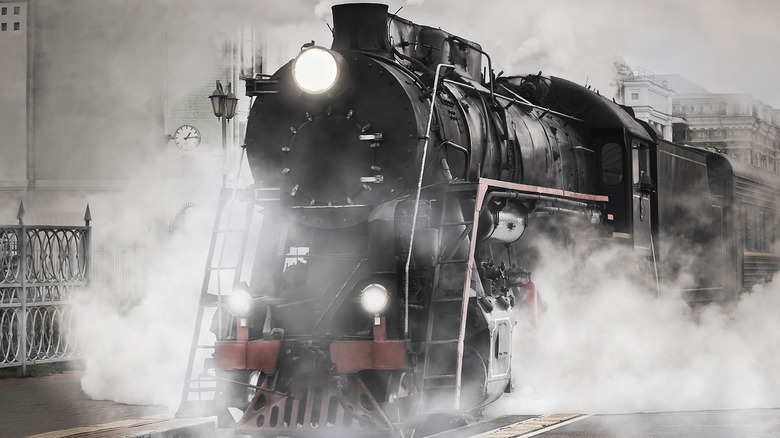
16 Best Inventions From The Industrial Revolution
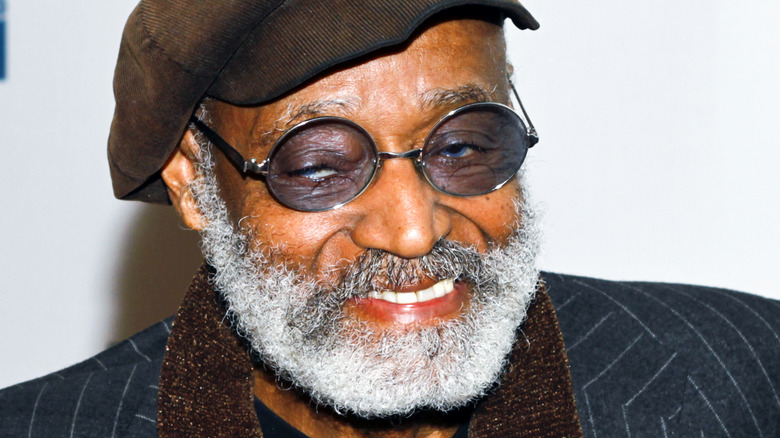
What Was Melvin Van Peebles' Net Worth When He Died?
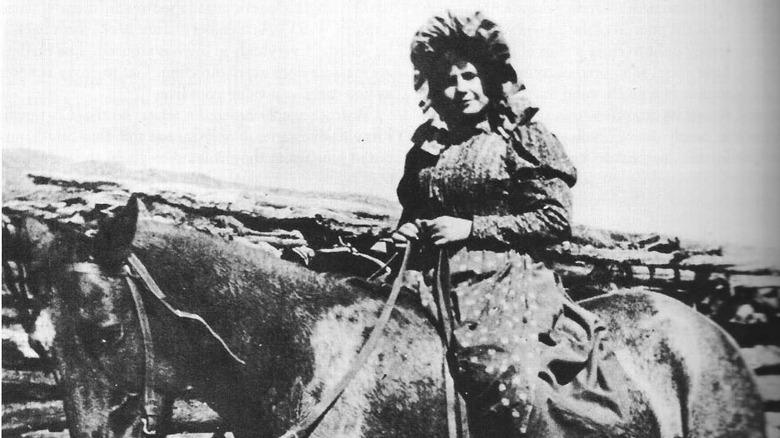
The Truth About Ellen Liddy Watson
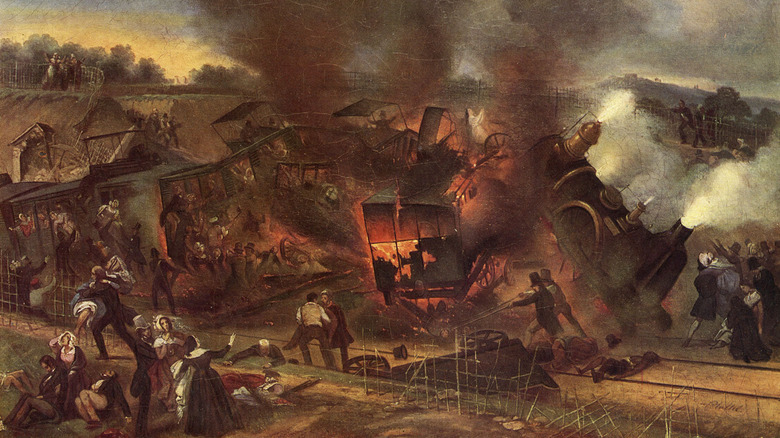
True Stories Of The First Railroad Accidents Everyone Forgot
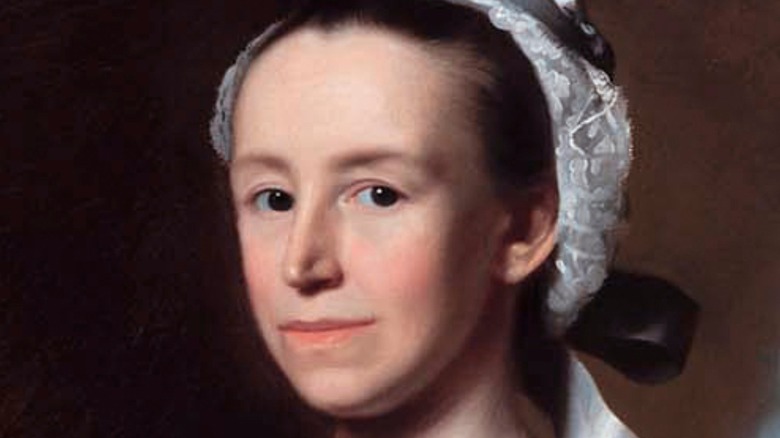
Lesser-Known Heroines Of The American Revolution
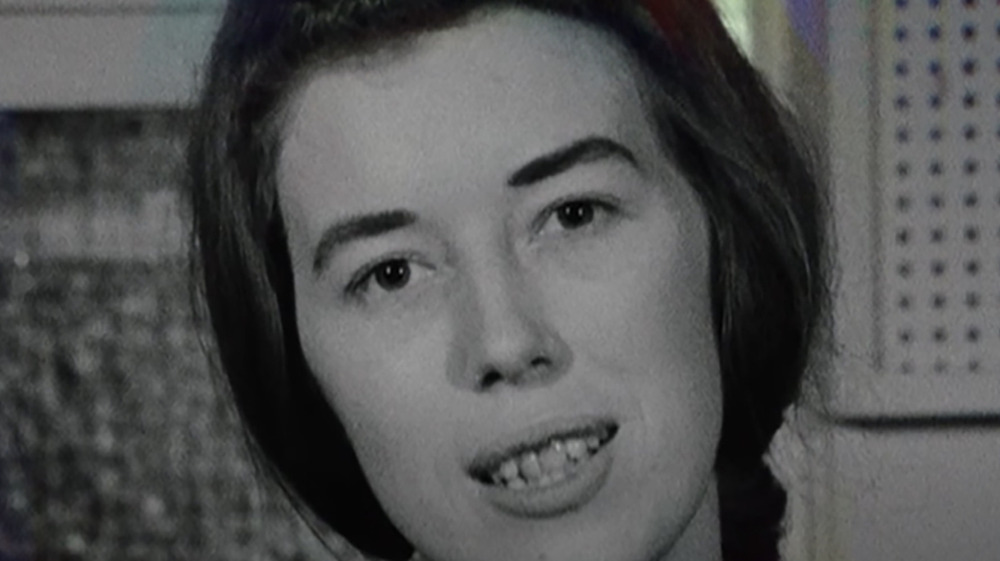
The Truth About The Woman Who Transformed Electronic Music

The Other Music Groups Bob Seger Has Been A Part Of

This Geode Has A Sesame Street Lookalike That Has The Internet Talking
